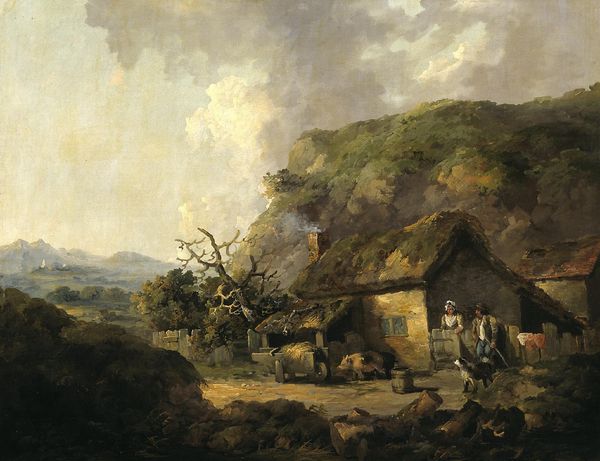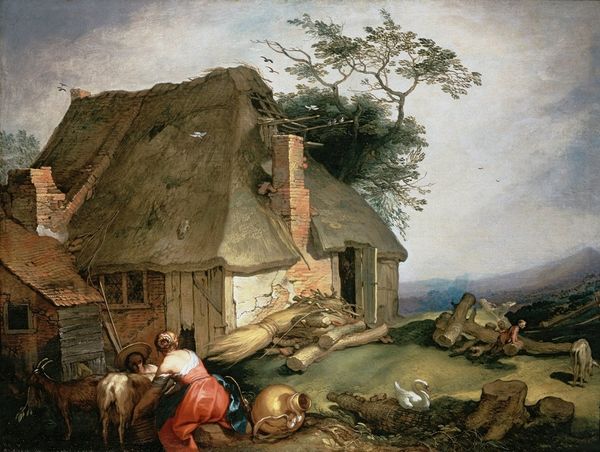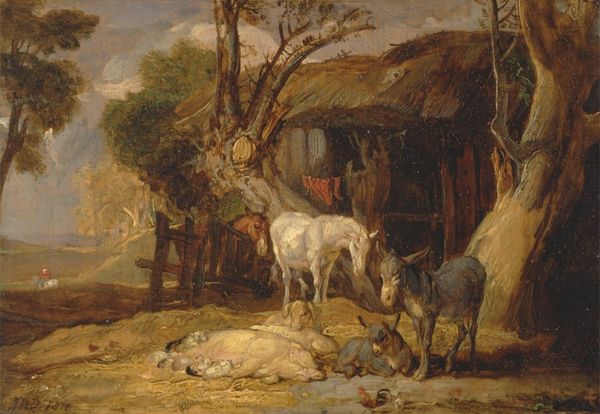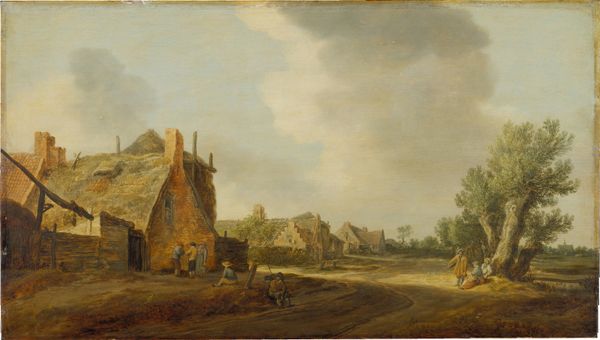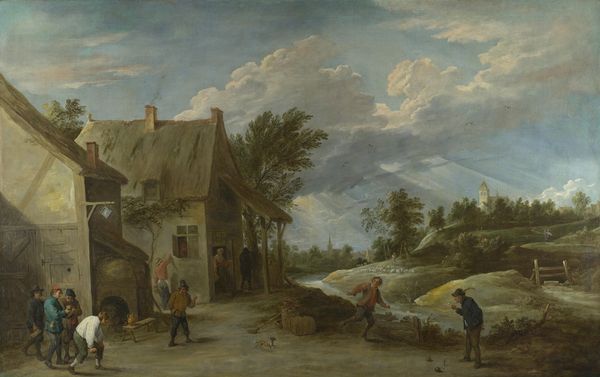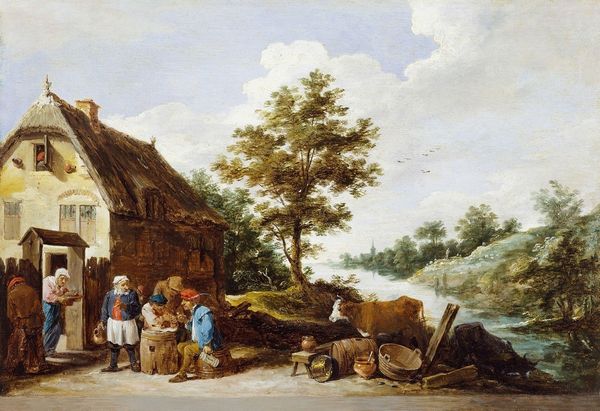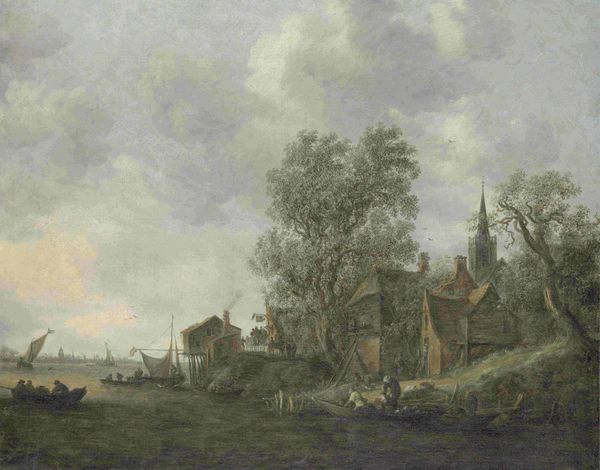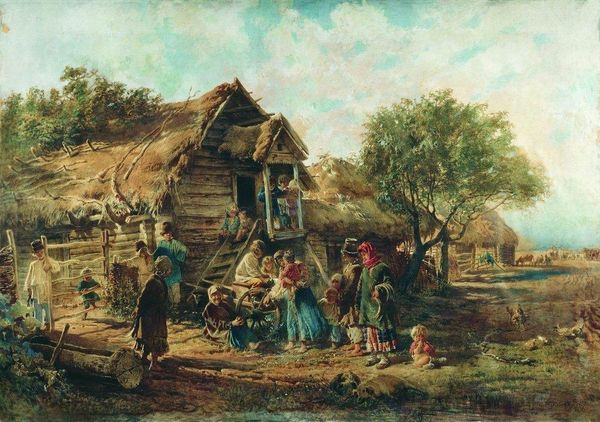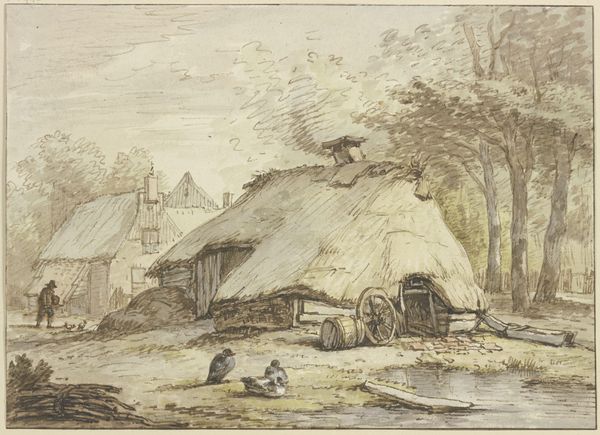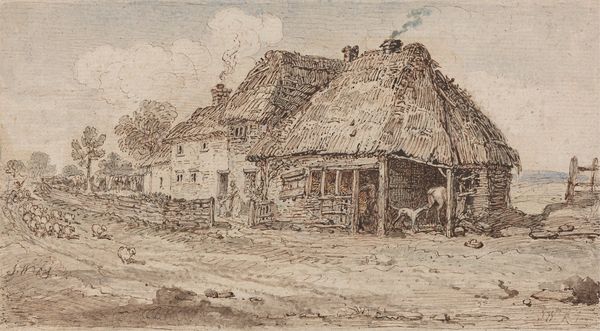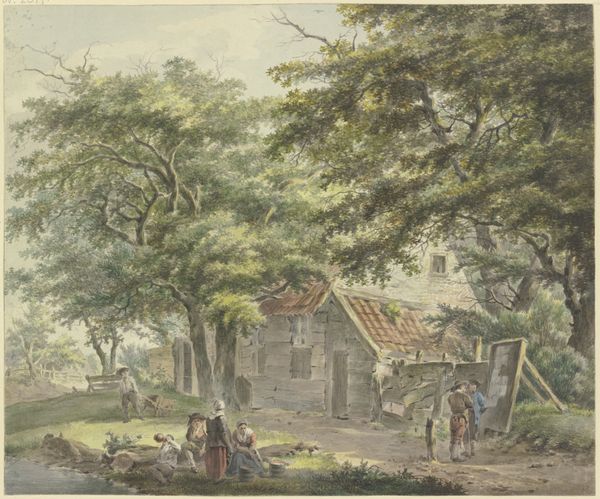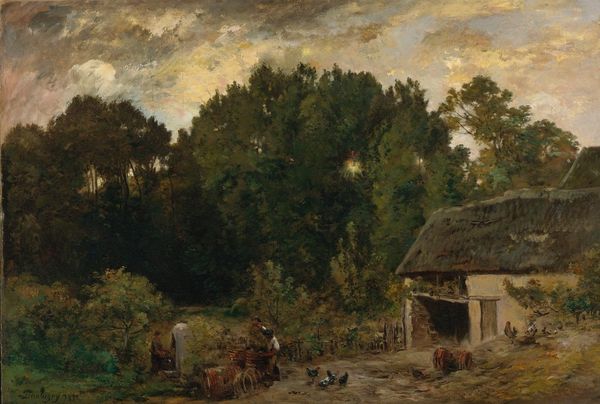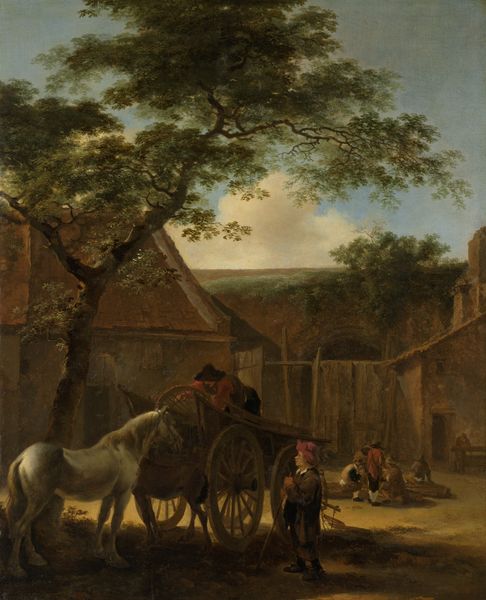
painting, oil-paint
#
painting
#
oil-paint
#
landscape
#
oil painting
#
romanticism
#
genre-painting
#
realism
Dimensions: height 41 cm, width 37 cm, depth 6.3 cm
Copyright: Rijks Museum: Open Domain
Curator: This is Pieter Pietersz. Barbiers’ "Farmhouse near Helvoirt," an oil painting from between 1814 and 1816. Editor: My immediate impression is one of understated melancholy. The color palette is muted, almost monochromatic, and the figures seem caught in a perpetual state of waiting. Curator: The painting’s success lies in its carefully orchestrated composition. Notice how the thatched roof slopes downwards, mirroring the posture of the woman carrying a bucket, thus visually connecting the house and the figure in a cohesive pictorial unit. The limited range of hues further unifies these elements. Editor: And what might Barbiers be suggesting with this portrayal? Farmhouses, especially in the Netherlands at this time, often represent ideas about national identity. Is this perhaps a subtle commentary on rural life in a rapidly changing social landscape? Curator: Indeed. There's an undeniable realism in how the farmhouse is depicted. But consider also the strategic arrangement of light and shadow. The stark contrast against the simple building facade suggests that the structure serves more than merely an architectural purpose. Note how the placement creates almost an allegorical symbolism that echoes artistic values of the Romanticism movement. Editor: You're right, while the subject matter seems quite mundane, there's a certain weightiness to the scene. Looking at this now, one cannot help but feel that its realistic elements do a wonderful job capturing an elegiac quality, reminiscent of, perhaps, earlier 17th-century genre painting but set against a later backdrop of political and economic shifts. Curator: The figures, despite their seemingly secondary role, also contribute to this atmosphere. Their interaction with the house suggests human dependence on shelter and place, underlining the painting's exploration of shelter. Editor: Well, considering everything, I find myself now seeing not only visual form but the sociopolitical context. The artist transforms an unassuming scene into a space charged with questions about nationhood, simplicity, and the ever-changing realities of human life. Curator: Ultimately, viewing “Farmhouse near Helvoirt” has allowed us to delve deeper than the picturesque or romantic, into considerations about rural identity and form in artmaking.
Comments
No comments
Be the first to comment and join the conversation on the ultimate creative platform.
